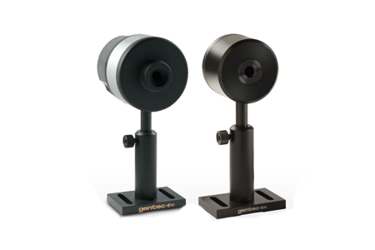How To Set Up And Use Our THz-B-DA And THz-I-BNC Analog Radiometer Probes

This is a technical guide from Gentec-EO for setting up and using their THz-B-DA and THz-I-BNC Analog Radiometer Probes. These THz detectors are pyroelectric, high-sensitivity "thermal" detectors designed for use with an Oscilloscope or a Lock-In Amplifier (LIA). The voltage output is maximized at a 5 Hz chopping frequency.
Key Setup Considerations
-
Avoid heat sources (like power supplies or human bodies) as the probes are very sensitive to infrared (IR) radiation.
-
The detectors are also sensitive to acoustic waves and mechanical vibration ("piezoelectric" properties), so avoid air conditioning vents and mechanical pumps.
-
An optical chopper running at 5 Hz is required for operation.
Powering the Probes
-
THZ-I-BNC probes include batteries and an AC voltage supply.
-
THZ-B-DA probes require the external battery and AC supply T-Rad-Analog.
-
Both models can work off batteries or an AC wall wart.
Step-by-Step Instructions (Using an Oscilloscope)
-
Mount and Align the probe to the optical axis of the THz source.
-
Power Up the probe using the rocker switch; a green power light should illuminate.
-
Connect the BNC analog output to the oscilloscope.
-
Wait for Thermal Equilibrium: When first powered up, the output may be a large negative voltage (e.g., $-10$ V), but it will stabilize to a final value of +200 mV after about 5 minutes.
-
Expose the Probe to your source by unblocking the beam.
-
Measure Power: Adjust the scope to get a good sawtooth voltage output (due to the chopper).
-
Measure the peak voltage and subtract the base voltage (this accounts for thermal drift).
-
Divide the result by the probe's voltage responsivity ($R_v$) in V/W to determine the power in Watts.
-
Ensure the detector is not being overfilled.
-
The document also provides diagrams for setting up the THz detector with an oscilloscope and with a Lock-In Amplifier, noting that the LIA setup is suitable for lower power levels and requires using the chopper's "sync" output as the reference.
Get unlimited access to:
Enter your credentials below to log in. Not yet a member of Photonics Online? Subscribe today.
